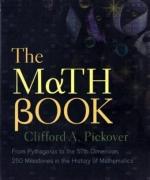|
This section contains 1,702 words (approx. 6 pages at 300 words per page) |

|
Overview
During the eighteenth century mathematicians and physicists embraced mathematics in general, and the calculus in particular, as an increasing powerful set of analytic techniques useful in the description of the physical world. Advancements in mathematical methods fueled increasingly detailed descriptions and investigations of the physical world. Caught between the rise of empirical science and the demands of the fledgling Industrial Revolution, the application of mathematics often outpaced its theoretical footing. Although there were sporadic attempts throughout the century to reconcile mathematical theory with its practical applications, it was a mostly French school of mathematicians in the later half of the century that undertook the task of producing a rigorous, self-consistent, mathematical system that was closely correlated to natural phenomena. The end result of these efforts to reintroduce rigorous analysis provided the foundation for the construction and rise...
|
This section contains 1,702 words (approx. 6 pages at 300 words per page) |

|


